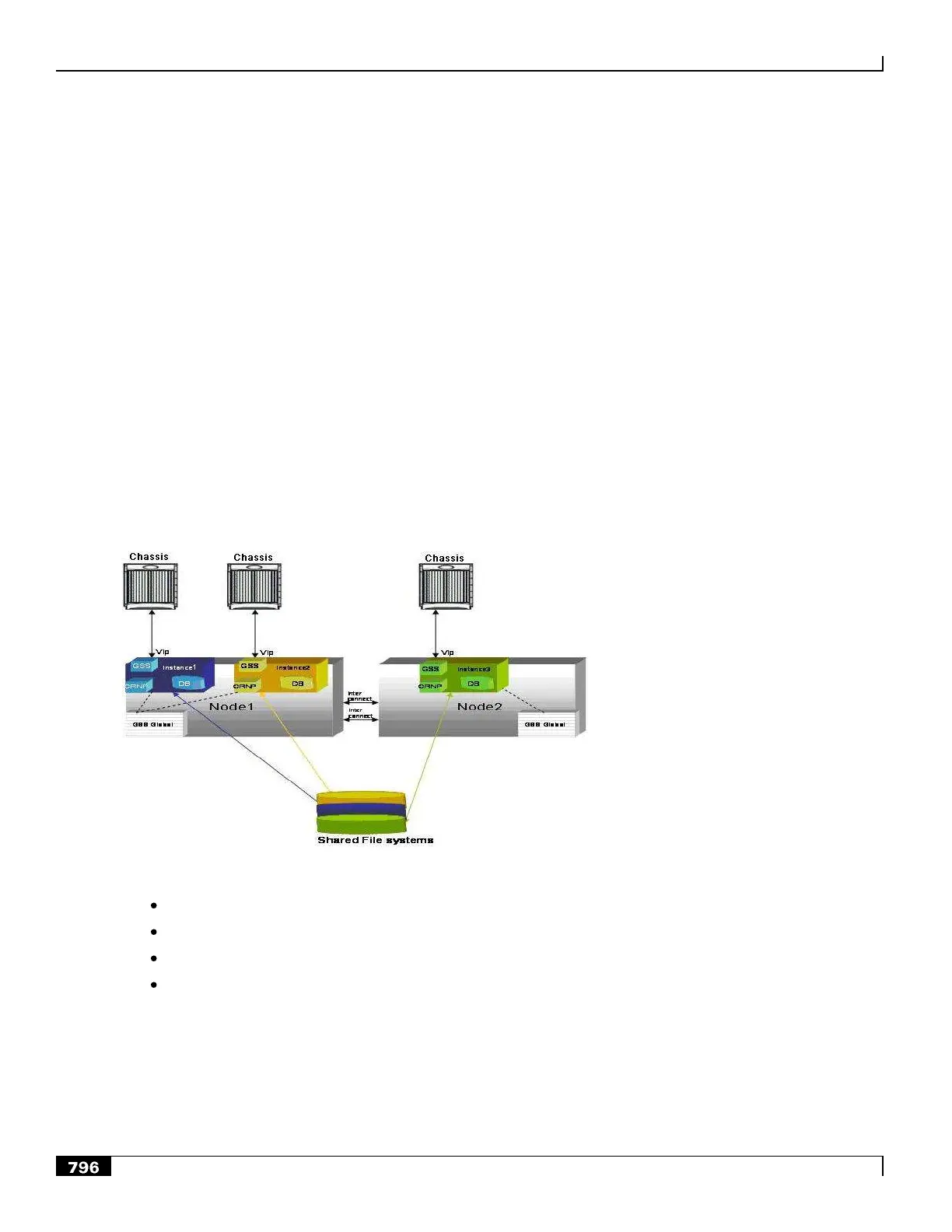GTPP Storage Server Overview
▄ Cisco ASR 5000 Series Product Overview
Multiple Instance GSS
This feature enables support for multiple data streams from one server or a single cluster setup to utilize multiple
instances of GSS with a single installation and multiple databases. In a cluster setup, there is only one installation per
node. During installation, GSS is installed at a fixed location (/opt/gss_global directory). The initial GSS installation
does not create any GSS instance. Once GSS is installed on both the nodes, the /opt/gss_global/make_gss_instance
script utility creates instances as and when needed and validates the conflicting ports/username across the instances.
For all instances on the node, only one set of binaries and scripts are used. Each instance has its own configuration file,
log directory, tools directory and separate PostgreSQL database. The alarms and events generated by each instance are
sent to its corresponding chassis. Individual GSS instance can also be stopped, started or switched over. Upgrade is
smooth and involves minimum down time as possible.
Each GSS instance can be uninstalled separately and will not have any impact on the other instances. Global installation
can be only uninstalled if there are no instances configured or running on the system.
The following figure explains the architecture of multiple GSS instances in a cluster setup.
Figure 190. Multiple Instances GSS
The advantages of this feature include:
Only one installation required for multiple instances
One binary used across all the instances on the node
Upgrading one set of binaries upgrades all the instances
In cluster mode resource groups, instances can be balanced across the nodes
For more information on the installation, uninstallation and upgrade procedures for multiple GSS instances, refer to
Multiple Instances of GSS section in the GSS Installation Management chapter.
